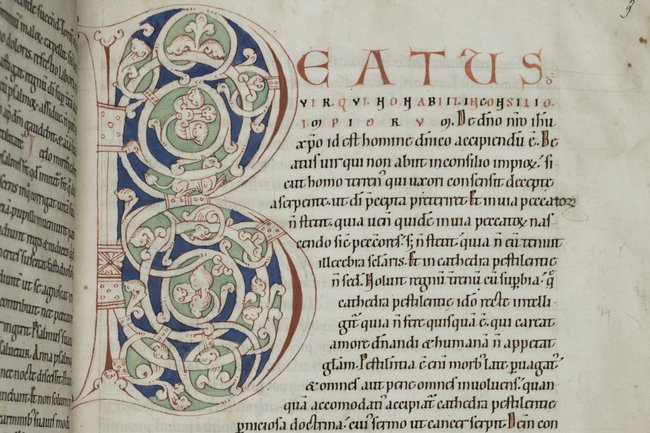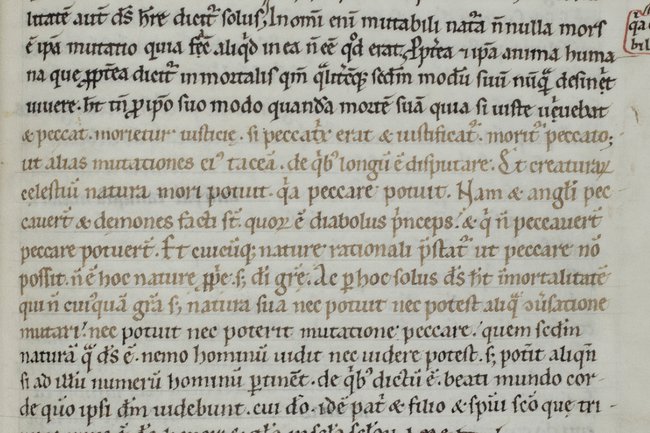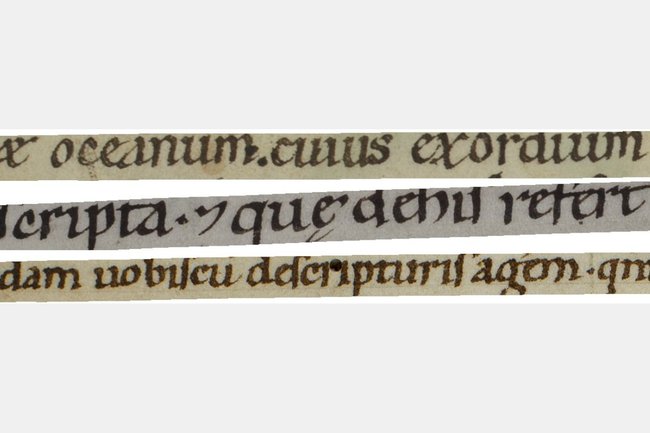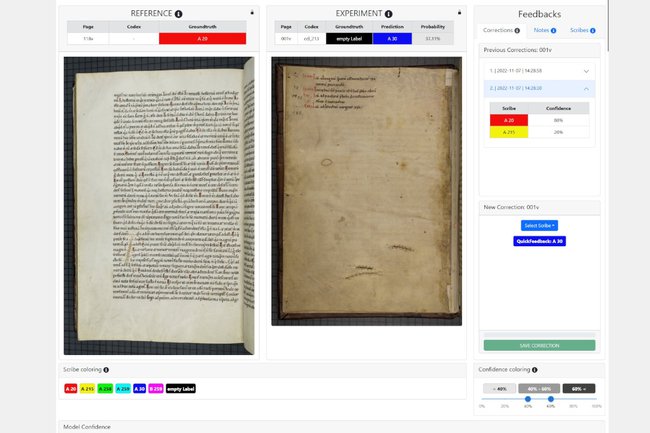Tracing the Steps of Medieval Writers
St. Pölten UAS Research Project Allocates Manuscripts to Authors

Lower Austria’s monasteries have extensive collections of medieval manuscripts. In most cases, there is no information on how many scribes were active in any one monastery, whether they travelled between monasteries, and how the scriptoria were organised.
A research project under the lead of the St. Pölten UAS supports historical research and uses artificial intelligence to identify copyists of manuscripts from the 12th century in the library of Klosterneuburg Monastery.
With the help of artificial intelligence, the project analyses the writing styles of different scribes, thus identifying these based on stylistic characteristics of their handwriting. This provides insights into the distribution of scribes in the manuscripts and the organisation of their writing sites, the scriptoria.

Manuscript with change of scribe, Credit: : Martin Haltrich / Klosterneuburg Monastery
Using Machine Learning to Analyse Writing Styles
So far, traditional manual writing style analysis has been carried out by experts in a tedious and time-consuming process and has always entailed the risk that the results might be subjectively influenced by individual impressions.
“There are approaches to identifying the manuscripts of medieval scribes with the help of machine learning. However, these cannot be applied to large collections of texts. We’re talking about tens of thousands of pages”, says Markus Seidl from the Institute of Creative\Media/Technologies at the St. Pölten UAS, who heads the project and has, together with his team, developed a procedure that makes it possible to apply automatic analysis to large volumes of manuscripts.
Using artificial intelligence and machine learning, the sheer number of pages can be analysed faster. The purpose is not to identify individual scribes as persons or by name but to ascertain whether different texts come from the same or different scribes.

A scribe ("A scribe's hand") in three manuscripts, Credit: Julius Weißmann / FHSTP
Collaboration between Humans and Machines
In this interdisciplinary project, historians work alongside computer scientists. All 12th-century manuscripts kept at the monastic library Klosterneuburg, which have been digitalised so far, form the basis of the study. Project partner is TU Wien.
“We take machine learning and human expertise and combine the best of both worlds”, says Seidl. The machine suggests a certain scribe to the palaeographers – the researchers of historic writing. The experts can either accept or reject the suggestion or make an alternative suggestion. The computer model is gradually improved through the experts’ assessments. “The advantage is that it allows us to allocate a large number of manuscripts much faster in a first step than humans alone could do it”, explains Seidl.
“This project does not just help us to interactively work on a significant desideratum of historical research. It also creates new possibilities and tools of analysis that enable a deeper knowledge of all other medieval scriptoria in the area that is now Lower Austria. Based on the study of the scriptorium of Klosterneuburg Monastery in the final third of the 12th century, we can answer bigger unresolved questions regarding the organisation of the written word in high medieval (Lower) Austrian monasteries”, emphasises Martin Haltrich, head of the monastic library in Klosterneuburg.

User interface of the Active Learning AI Editor developed in the project, Credit: Marton Doka / FHSTP
Research – Teaching – Final Theses
The project is also an excellent example of the international and interdisciplinary connection of teaching and research. Two master theses have already been completed as part of the project and a third one is in the making. The theses were and are written at the Johannes Gutenberg University Mainz (Digital Humanities), the University of Vienna (History), and the St. Pölten UAS (Interactive Technologies):
- “On the use of machine learning to investigate scribes of the Klosterneuburg scriptorium in the final third of the 12th century“ by Julius Weißmann
- “On the first scriptorium of Klosterneuburg Monastery in the 12th century – a study for the development of methods in scriptorium research“ by Viktoria Reich
- “Development of a Siamese Convolutional Neural Network for Handwritten Text Similarity Estimation in Medieval Manuscripts“ by David Schaupp
Moreover, several students of the bachelor degree programmes Creative Computing and Media Technology as well as the master degree programme Digital Innovation and Research accompanied the project within the framework of courses and internships and as research assistants.
Project Scribe ID
The project receives funding from the Gesellschaft für Forschungsförderung NÖ (the research promotion agency of the province of Lower Austria; GFF, formerly NFB) within the framework of the FTI Call 2018 for digitalisation. Partners in the project are Klosterneuburg Monastery and TU Wien.

FH-Prof. Dipl.-Ing. Dr. Markus Seidl , Bakk.
Academic Director Creative Computing (BA) Interim Head ofMedia Computing Research Group
Institute of Creative\Media/Technologies Department of Media and Digital Technologies
